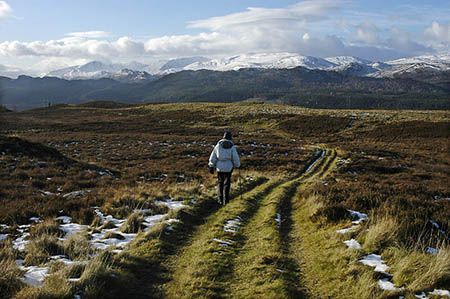Mountaineers have voiced their opposition to a windfarm development in the Highlands they said would make an extraordinary landscape ordinary.
The Mountaineering Council of Scotland said the building of turbines near Glen Affric would hit the local economy, which is heavily reliant on outdoor tourism.
The MCofS has objected to a proposal to build seven 119.5m (392ft) wind turbines on the slopes of Beinn Mhòr above Tomich, near the eastern end of Glen Affric.
WPD, based in Bremen, Germany, said its development could supply up to 11,500 households with clean and sustainably produced electricity annually and reduce carbon dioxide emissions through the substitution of fossil fuels by about 527,000 tonnes over its lifetime.
It added: “The project area was chosen because of its close proximity to other man-made structures, including overhead power lines, existing roads and communication masts.
“The wind-power project could thus be built with only short sections of new access track required, minimising any impact on the environment.
“The surrounding hills and plateaus [sic] would shield the project area almost completely from the main travel routes, the town of Tomich and preserve the amenity of the area for local residents and visitors.”
But the MCofS said: “The proposal would severely impact on the important and iconic landscape of the Glen Affric area.”
The organisation, which represents hillwalkers and climbers, said the area was popular with mountain-goers and less active tourists, and that a recent survey had shown people were less likely to return to places where wind farms were built.
MCofS chief officer David Gibson said: “A cluster of 120m-high turbines will inevitably act as a visual focal point and will affect the views from the entrance to the glens west of Strathglass and the Glen Affric hills north and south-west of Loch Beinn a’ Mheadhoin.
“Mountaineering is a substantial contributor to tourism and recreation spend in the Highlands, and we have direct evidence from a recent survey of MCofS members and British Mountaineering Council members that hillwalkers are changing their behaviour to avoid areas with windfarms.
“The Affric area is not on a through-route open to passing trade. It is a destination which people choose to go to specifically because of its natural beauty. The spread of turbines is making our extraordinary landscapes seem increasingly ordinary.
“People don’t come to the Highlands for ordinary.”
The council added the existing and approved capacity of onshore wind electricity generation in Scotland is, relative to its geographic area, now higher than Denmark and Spain and as high as Germany.


TH
23 May 2014Best vote No in September then, then get out of the EU. Not many jobs for locals here, just Germans.